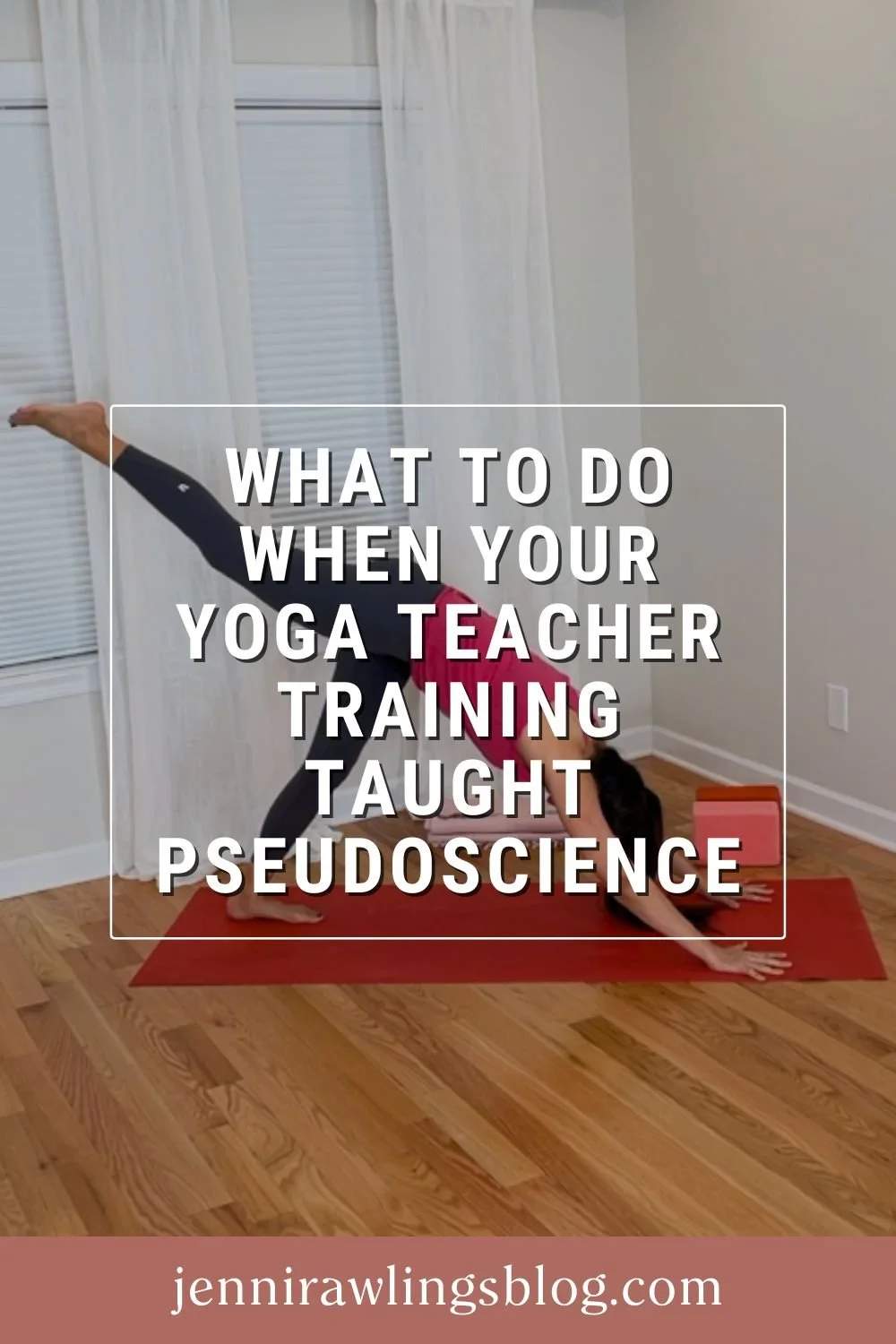The Magical Transition I Get Asked About the Most
This blog post was first sent to Jenni’s email list as an email newsletter. Sign up for the JRY email newsletter here!
How do we transition from a seat to a squat without using our hands?
I share a lot of creative yoga sequencing ideas on social media, and I'm often asked about tips for certain transitions that I include.
But there's one transition I receive more questions about than any other, and it's this one right here:
I don't know of an official name for this move, but I usually call it transitioning "from a seat to a squat."
This move involves starting in a seated position with your pelvis on the floor, then transitioning into a squat with your feet on the floor – without using your hands.
For many people, this transition is much easier said than done, though! Instead of easefully shifting our weight from our pelvis into our feet and arriving in our squat smoothly, we often find ourselves "stuck" and unable to lift up off the floor at all.
I find that some specific mobility and skill work can be quite helpful when it comes to this transition.
Here are a few of my key tips for the elusive seat to squat!
🔧 Start with these two practical prop strategies:
1) Elevate your hips on a yoga block
Instead of starting the transition from the floor, try beginning from a slightly elevated seat – like a yoga block (or two!) or a low stool.
This gives you more leverage to shift forward and lift into your squat.
Once the movement feels smoother, you can gradually lower the height of your seat until you're able to perform the transition directly from the floor.
2) Hold a weight out in front of you
Another helpful strategy is to hold a small weight (like a dumbbell or weight plate) out in front of you:
This acts as a counterbalance, helping you shift your center of mass forward – which is key to getting your feet under you and finding your squat position.
Once the movement feels easier, you can gradually decrease the weight until you're doing it with just your bodyweight.
Supplement with targeted mobility work!
Anatomy lesson time:
Do you see how the angle of the ankle changes from the beginning of the transition to the end? In the beginning, our shin is approximately vertical, but by the end of the movement, our shin has angled significantly forward relative to the ankle, which is a position called dorsiflexion.
Having access to a good amount of dorsiflexion is important for the seat-to-squat transition.
If our tibia (shin bone) can't angle forward relative to our ankle, we can't access the forward lean we need in order to shift our weight from our pelvis to our feet and arrive in our squat.
Therefore, dorsiflexion mobility work can be key for improving your ability to move through this transition!
Here are 3 of my favorite ways to do that – both passively and actively.
1) Half kneel half squat:
This passive stretch mimics the ankle position we use in the seat-to-squat transition.
Sit on one heel (the kneel) and lean forward into the other thigh (the squat).
Hold for 30-60 seconds and practice frequently throughout the week!
2) Deficit calf raise:
This is a strength-based mobility drill that uses a fuller range of motion than a standard calf raise.
By elevating our feet on a higher surface, we can descend our heels down lower than the balls of our feet, which brings us into that position of dorsiflexion we're trying to mobilize!
I'm using two stacked weight plates here, but a stair or a curb works perfectly for this move as well!
3) Tibialis anterior raise:
This is a less well-known but very potent move!
We lean against a wall and step our feet several inches forward from the wall. (The farther forward the feet step, the tougher this will be.)
Then we lift and lower the balls of our feet off the floor, actively moving through a full range of motion in dorsiflexion.
But wait – there's more!
Check out this video version of some of the tips I covered in this blog post – I think you’ll appreciate the visual demonstrations and extra instructions!










